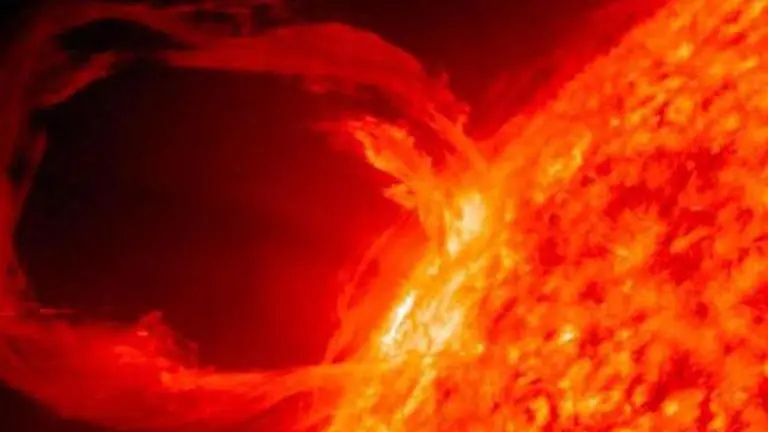Updated 15 July 2021 at 16:37 IST
Dense stream of solar wind enveloped earth for few hours, no major harm caused: NOAA
A dense stream of solar wind enveloped the Earth late Wednesday, according to National Oceanic and Atmospheric Administration (NOAA) but caused no major harm.
- Science News
- 3 min read

A dense stream of solar wind enveloped the Earth late Wednesday, according to National Oceanic and Atmospheric Administration (NOAA), but no notable impact was observed as the event wasn’t powerful on the space weather scale. The phenomenon lasted for a few hours and slightly jolted the planet’s magnetic field, the US agency said further. According to the NOAA alert, the storm passed through the Earth at 16:41 UTC with a geomagnetic K-index of 4. The K-index is used to characterize the magnitude of geomagnetic storms, and a level of 4 indicates minor disturbance.
Active geomagnetic conditions (Kp4)
— SpaceWeatherLive (@_SpaceWeather_) July 14, 2021
Threshold Reached: 16:31 UTC
Follow live on https://t.co/Zkq26B89Y7 pic.twitter.com/PHdhOh1Xwf
Solar winds are charged particles that are released from the Sun's outermost atmosphere called Corona. These particles then travel along the Sun’s magnetic field lines that extend radially outward. According to NASA, these geo-magnetic rays affect the earth’s magnetic field for 6 to 8 hours. However, it takes several days to correct it. While seemingly harmless to human beings, the waves have the potential to obliterate power grids, jam radio communications and bathe airline crews in dangerous levels of radiation and knock critical satellites off-kilter.
The resonance of solar winds impacting upon the Earth’s magnetic field... pic.twitter.com/7rr8GgzX53
— George William (@GeorgeW78246413) July 14, 2021
What causes 'solar storms'?
Every 11 years, the sun goes through a solar cycle that fluctuates the activity of the solar flares radiations. In December 2019, the sun observed its 25th cycle with solar minimum or when the activity was less intense with fewer sunspots. However, the sun’s solar flares are expected to reach their maximum in July 2025. Scientists may observe the activity of the sun during April 2024, when a total solar eclipse occurs. Solar flare eruption activity was witnessed last Saturday on July 3 where researchers roughly observed approximately 1,500 flares headed towards the Earth with energy equivalent of millions of 100-megaton hydrogen bombs exploding at the same time, Bill Murtagh, program coordinator at the US Space Weather Prediction Center told CNN.
Sun’s flares are measured by the scientists as A-class flares categorized as the smallest and X-class flares being the largest. The flares that are expected to cause a solar storm on July 11 or 12 are the largest category of solar flares categorized as X1(R3 - Strong Radio Blackout) that occurred last week at 14:29 UTC. A massive energy release accompanied by coronal mass ejections, or the magnetic plasma bubbles will be felt at 93 million miles away from Earth’s atmosphere, Murtagh said. The coronal mass ejection may also leave the sunspots that may take weeks or months to diminish.
Advertisement
Image: NASA
Published By : Riya Baibhawi
Published On: 15 July 2021 at 16:37 IST
